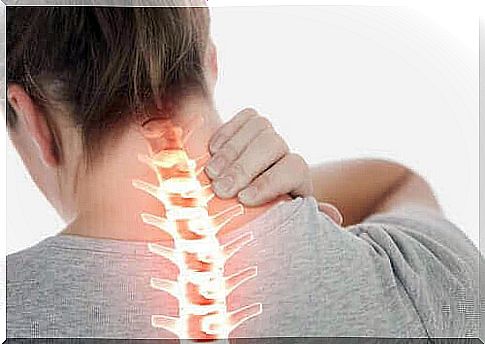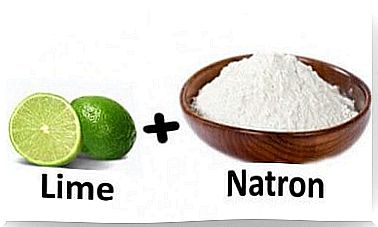Torticollis: Symptoms And Treatment

Torticollis is a contraction that occurs in the muscles of the neck, and usually occurs due to poor sleep. Poor neck position can lead to stiffness and a lot of pain when you move.
As the article Update on acute mechanical cervicalgias points out, torticollis can also occur after exposure to drafts or forced movements. So you need to take care of your neck to prevent this painful condition.
Congenital torticollis

Before addressing the characteristic symptoms of torticollis, we must introduce the concept of congenital torticollis . This refers to the presence of this disease from the moment a baby is born. Studies also indicate that the disease may originate from a type of deformity at birth. The baby’s sternocleidomastoid is shorter due to problems during birth.
The only solution in these cases is to undergo a surgical operation as soon as possible. This is because the body, for example, will try to compensate for the shortening of the muscle.
As the newborn grows, the head will lean more to one side than the other. When you are forced to correct it, resistance will occur along with slight pain.
Although in some cases you can avoid surgery, it is often the only solution when a child is born with this disease. In any case , it is important to follow the instructions of the doctor, so that it develops in as good a way as possible for the baby.
The symptoms of torticollis
Now that you’ve learned about congenital torticollis, let’s look at the symptoms of the most common version: The one we all know, because we’ve had it at some point in our lives. We will also tell you how to relieve this disease.
Limited head movement
Torticollis is when you get up from bed after sleeping through the night, and feel intense pain in the neck when you make a small movement. Maybe your head is leaning to one side, or you have reduced mobility in the area. If you touch the place where it hurts, you will notice how stiff the muscle is.
- In these cases, you must avoid sudden movements, as well as warm up the neck to control the temperature in the area.
- You can give yourself a gentle massage to reduce discomfort (although it will only be short-lived).
Headache
Torticollis can also cause headaches, especially if you are exposed to them. This is due to the stiffness of the area, and there may also be pain in the neck.
In these cases, you should also avoid sudden movements, and try to keep the area still. If this is not possible and your work requires mobility, use a headrest. However, you must put it on immediately, and you must make sure that it does not under any circumstances increase the pain.
Shoulders of different heights

Finally, a characteristic symptom of torticollis is that one shoulder is slightly higher than the other. This is due to the intense contraction that occurs in the muscle, and which forces the head to lean against one side.
In this case, you can do a very gentle and controlled stretching to relieve the discomfort. You must also avoid sudden movements. The best thing you can do is rest as much as you can.
Also remember that torticollis get better as the days go by. In fact, it usually lasts about three days. Therefore, if you take it easy, the problem will go away faster than you expect.
Having a good position when you sleep, as well as getting the right pillow, can reduce your chances of torticollis. Either way, keep in mind that everyone is going to experience this at some point, and there is nothing to worry about.









